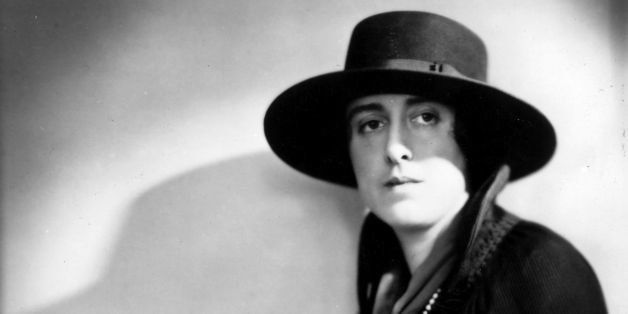
English aristocrat Vita Sackville-West was a great writer manqué. Posterity has chosen to applaud the genius of her plantsmanship at her garden at Sissinghurst Castle in Kent, with its much-imitated White Garden, or to uphold her as a gay icon who vigorously resisted the sexual expectations of her generation and class: her idea of herself was quite different.
For Vita, acclaimed in the American press in her lifetime as Britain's 'Rose Queen', gardening was a lifelong passion. It provided one of the building blocks of her unconventional marriage to diplomat, writer and politician Harold Nicolson, himself predominantly homosexual, and her solace in moments of darkness. In the same way, her many love affairs, the bulk with other women, offered excitement, stimulus and the promise -- if rarely the reality -- of self-fulfillment. Lonely at heart, Vita wrote in an unpublished poem in her diary that she longed for 'contact'. In time she learnt that the contact of fleeting romantic and sexual escapades was elusive and illusory. To her husband she dismissed these emotional upheavals as 'béguins' or dalliances, the choice of the French word suggesting something trivial, as ultimately many of her affairs proved. By contrast what sustained her for most of her life was her determination to be a writer. That, and her sense of herself as the latest scion of a great English aristocratic dynasty, shaped both the person she was and the person she wished to be.
Vita Sackville-West was essentially a creative artist. She applied this creativity as much to her own life and her self-perception as to her published output and her world-class garden. The exuberance of her sexual infidelity and her luscious planting at Sissinghurst are both expressions of a determination to avoid constraints. That sense of herself as exempt from the rules and regulations of life as ordinarily lived stemmed from her understanding of her family history and her belief in herself as an inheritor of erstwhile English greatness, a latterday Tudor grandee ensconced in the ancestral magnificence of Knole, one of the largest houses in the world and home to the Sackville family for half a millennium. Her sense of history shaped her sense of class, which in turn suggested the empowerment that traditionally comes from wealth and status. Vita learned as a teenager that, in early-twentieth-century Britain, empowerment was essentially a masculine prerogative and therefore denied her in life. Not, however, in fiction. In almost of all of her writing, beginning as a child, Vita reimagined herself in masculine guise. In doing so she restored to herself that empowerment she considered her due on account of her aristocratic status.
On both sides of the Atlantic, Vita has been criticised for snobbery. It is to her credit that this only child of dysfunctional parents grew up ultimately to value not social rank but the role of the artist. For all her awareness of class, Vita longed throughout her life to be a writer. Among the defining moments of her existence was her recognition that, despite a facility for words, she would never be more than a middling practitioner and -- devastatingly -- that her contemporaries agreed with that damning self-assessment. In Britain Vita enjoyed literary celebrity for half a century. Many of her novels and works of nonfiction were bestsellers and both her long poems, The Land and The Garden, won prestigious awards. But the tide turned at the midpoint in her career and over time she fell increasingly out of favor with the British literary establishment. The body blow was dealt in 1946, when Vita was excluded from a performance of the works of living poets in front of members of the Royal Family. The decision was made by members of a literary committee on which she herself sat. For the remaining fifteen years of her life, she never wrote another line of poetry.
Vita described herself as someone who loved "books and flowers and poetry" and also "literature, and peace, and a secluded life." She was being wholly truthful. It is significant that absent from both estimates of what made her happy is any mention of other people: not her husband Harold nor her sons Ben and Nigel; not Violet Trefusis, the lover who turned her world upside down, or Virginia Woolf who, having briefly been Vita's lover, remained her friend for two decades. Vita's was the loneliness of the artist whose life is dominated by a sense of vocation. It is the irony of Vita's life that her garden, not her many books, provides her lasting memorial.
Matthew Dennison is the author of Behind the Mask: The Life of Vita Sackville-West (St. Martin's Press).